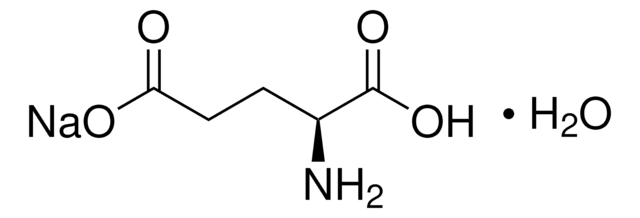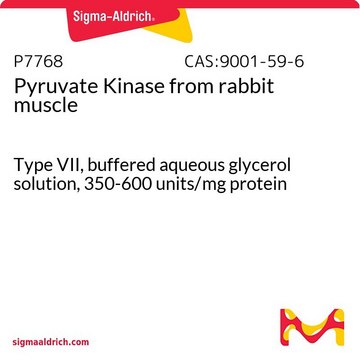49605
L-Glutamic acid hemimagnesium salt tetrahydrate
≥98.0% (NT)
Synonym(s):
Magnesium L-glutamate
Sign Into View Organizational & Contract Pricing
All Photos(1)
About This Item
Empirical Formula (Hill Notation):
C10H16MgN2O8 · 4H2O
CAS Number:
Molecular Weight:
388.61
EC Number:
MDL number:
UNSPSC Code:
12352209
PubChem Substance ID:
NACRES:
NA.22
Recommended Products
Assay
≥98.0% (NT)
form
solid
reaction suitability
reaction type: solution phase peptide synthesis
application(s)
peptide synthesis
SMILES string
O.O.O.O.N[C@@H](CCC(=O)O[Mg]OC(=O)CC[C@H](N)C(O)=O)C(O)=O
InChI
1S/2C5H9NO4.Mg.4H2O/c2*6-3(5(9)10)1-2-4(7)8;;;;;/h2*3H,1-2,6H2,(H,7,8)(H,9,10);;4*1H2/q;;+2;;;;/p-2/t2*3-;;;;;/m00...../s1
InChI key
ZWCGDRSVJYJGFY-GYDBBPQESA-L
General description
L-Glutamic acid hemimagnesium salt tetrahydrate is commonly known as Magnesium L-glutamate. It donates magnesium ions necessary for effective protein synthesis.
Application
L-Glutamic acid hemimagnesium salt tetrahydrate is a magnesium transfer agent/carrier. It can also be used in the preparation of S30A buffer solution.
Storage Class Code
11 - Combustible Solids
WGK
WGK 2
Flash Point(F)
Not applicable
Flash Point(C)
Not applicable
Choose from one of the most recent versions:
Already Own This Product?
Find documentation for the products that you have recently purchased in the Document Library.
Customers Also Viewed
Quantum-mechanical calculations and spectroscopic characteristics of magnesium glutamate?glycine and magnesium glutamate?arginine.
Marcoin W, et al.
Journal of Molecular Structure, 792, 186-193 (2006)
Synthesis and antiarrhythmic activity of new biologically active potassium and magnesium donors.
Berlyand A S, et al.
Pharmaceutical Chemistry Journal, 41(12), 634-637 (2007)
Synthesis of 2.3 mg/ml of protein with an all Escherichia coli cell-free transcription?translation system.
Caschera F and Noireaux V
Biochimie, 99, 162-168 (2014)
Improving cell-free glycoprotein synthesis by characterizing and enriching native membrane vesicles.
Jasmine M Hershewe et al.
Nature communications, 12(1), 2363-2363 (2021-04-24)
Cell-free gene expression (CFE) systems from crude cellular extracts have attracted much attention for biomanufacturing and synthetic biology. However, activating membrane-dependent functionality of cell-derived vesicles in bacterial CFE systems has been limited. Here, we address this limitation by characterizing native
Our team of scientists has experience in all areas of research including Life Science, Material Science, Chemical Synthesis, Chromatography, Analytical and many others.
Contact Technical Service













